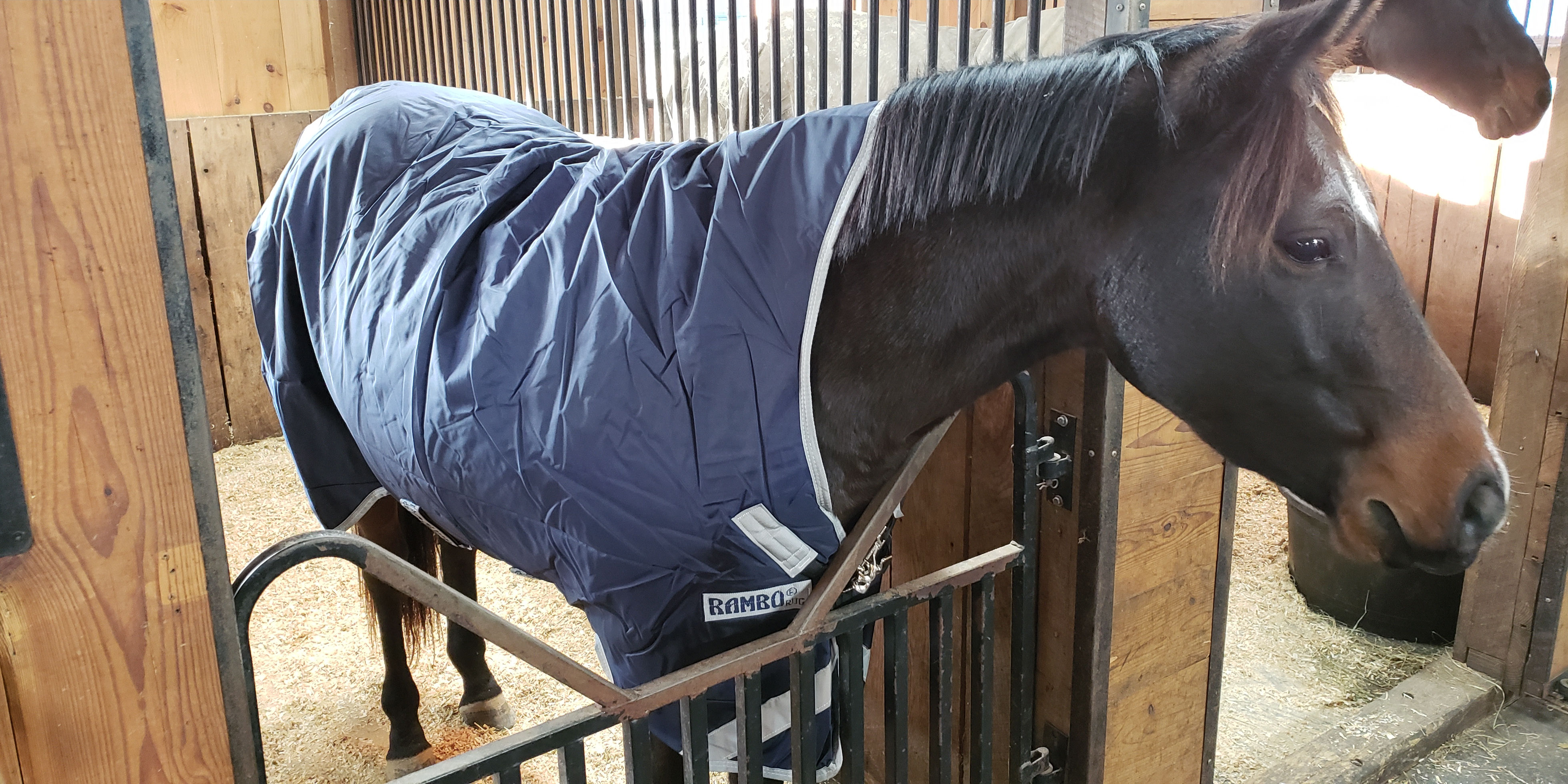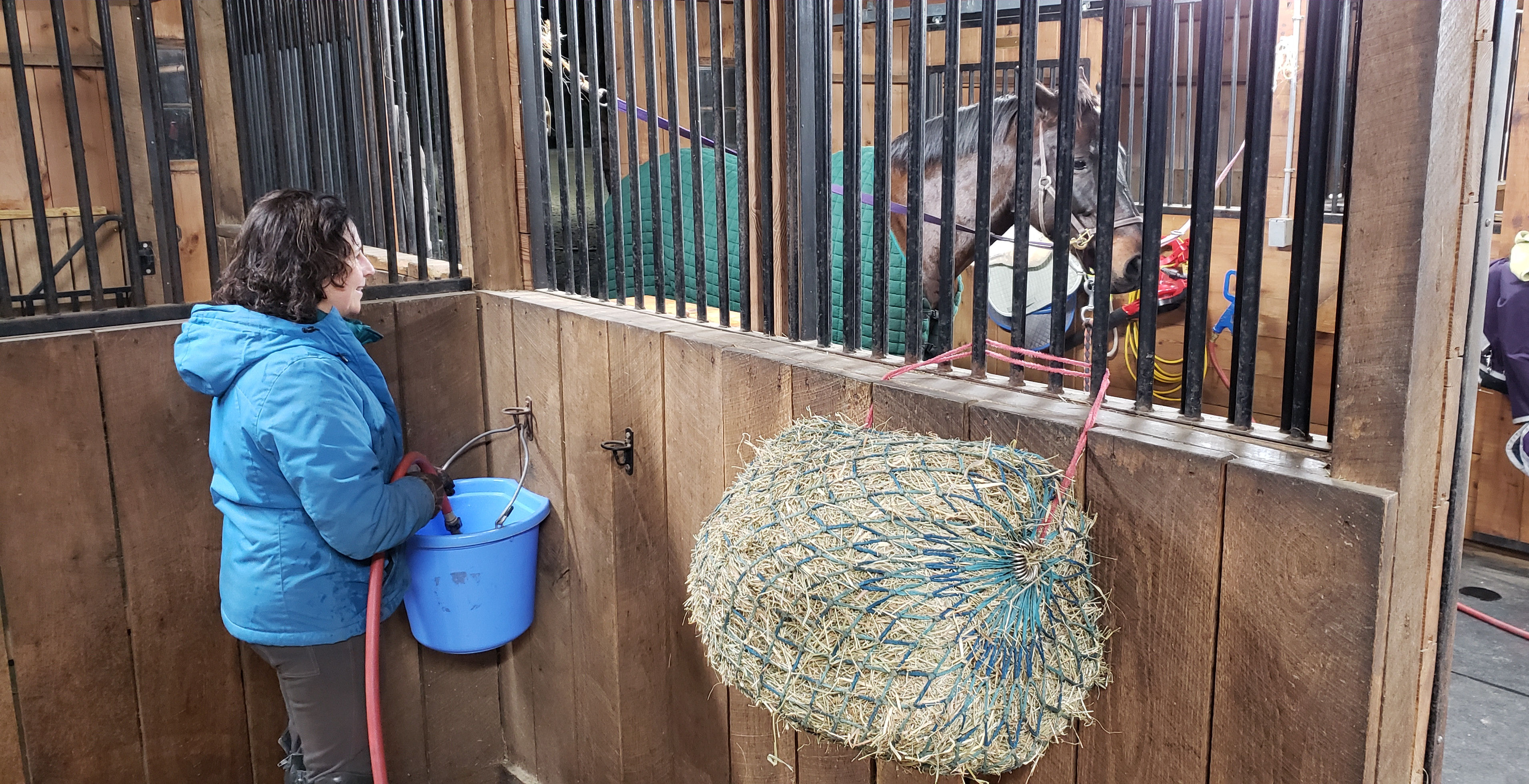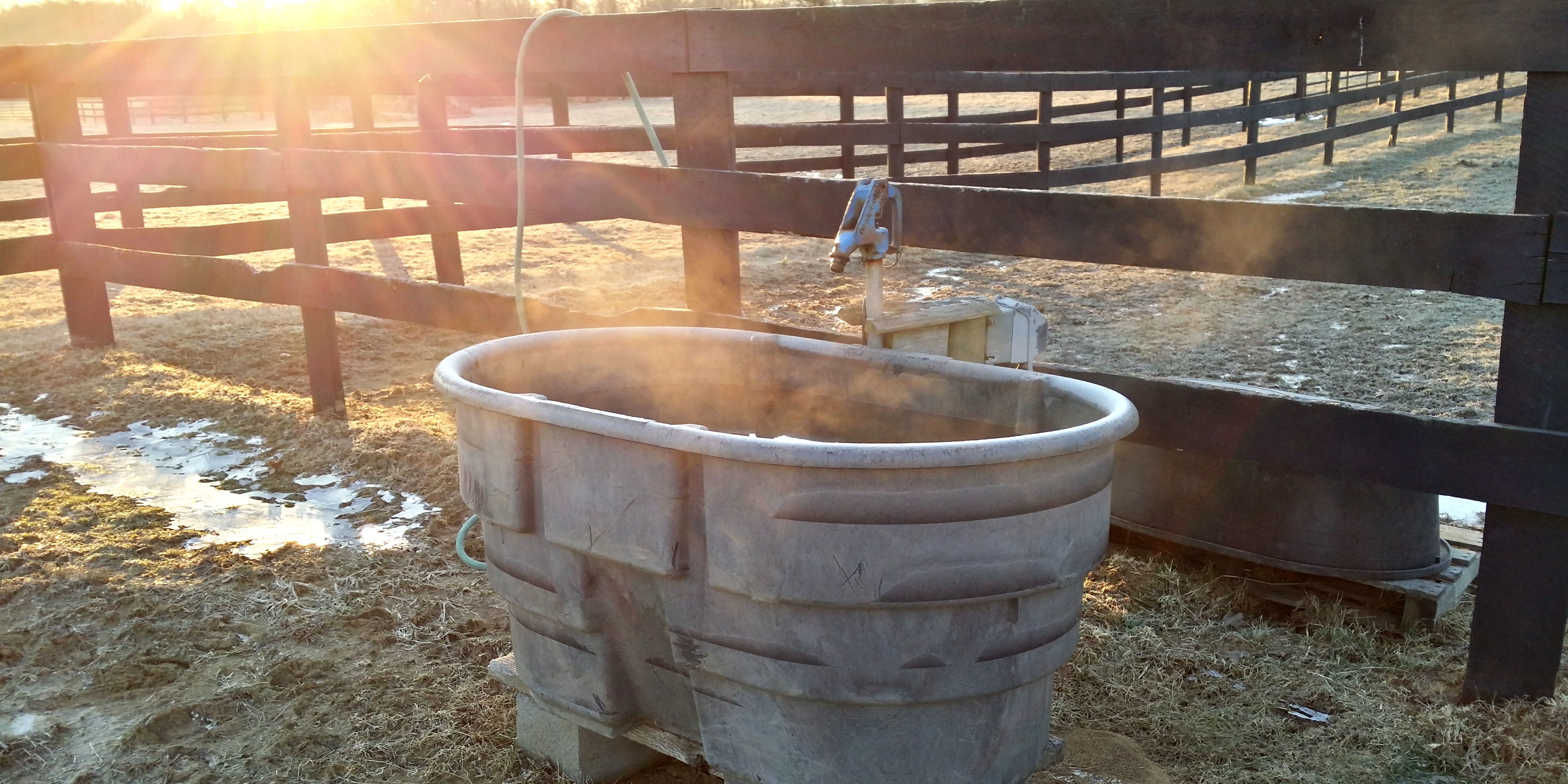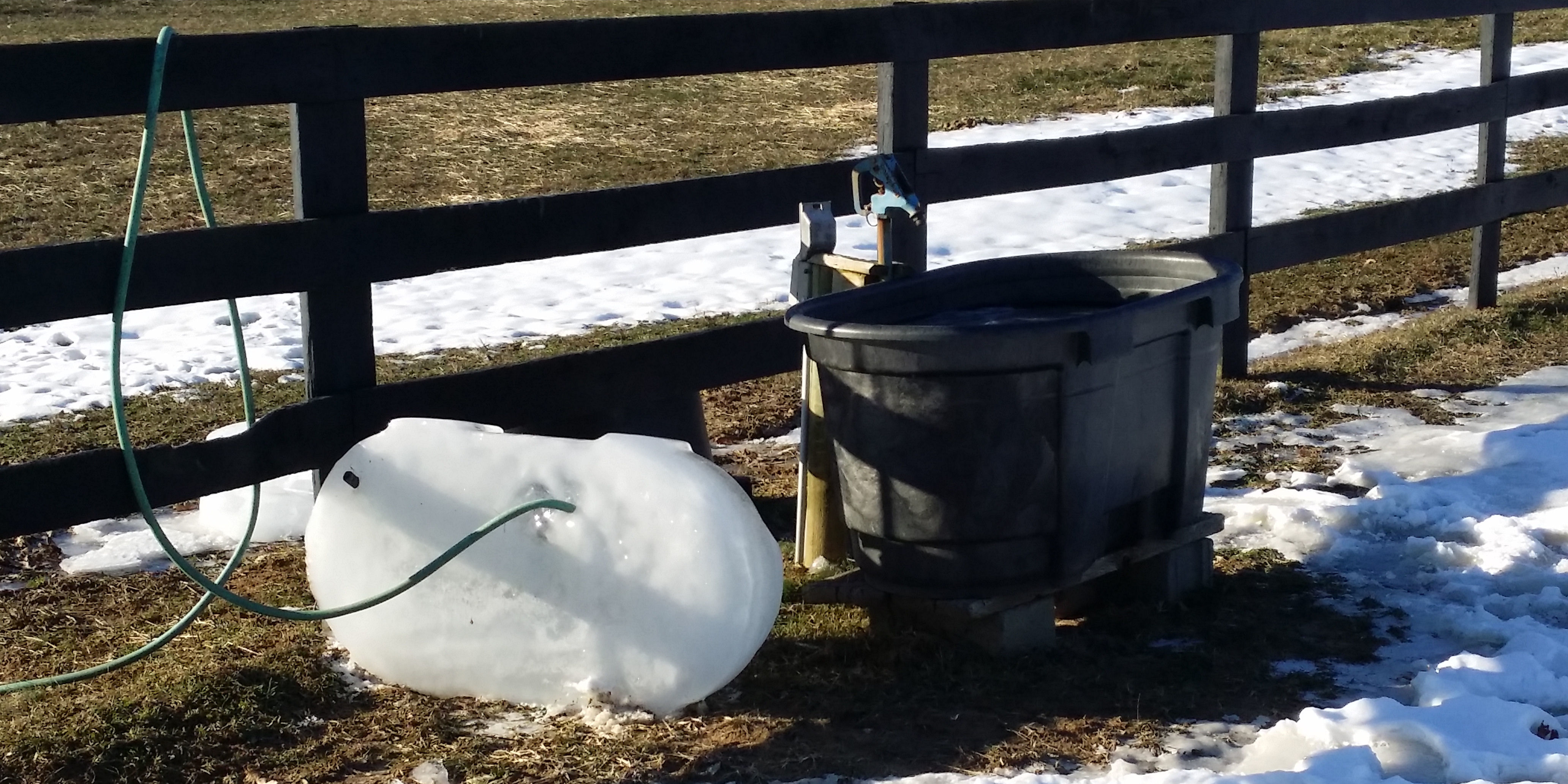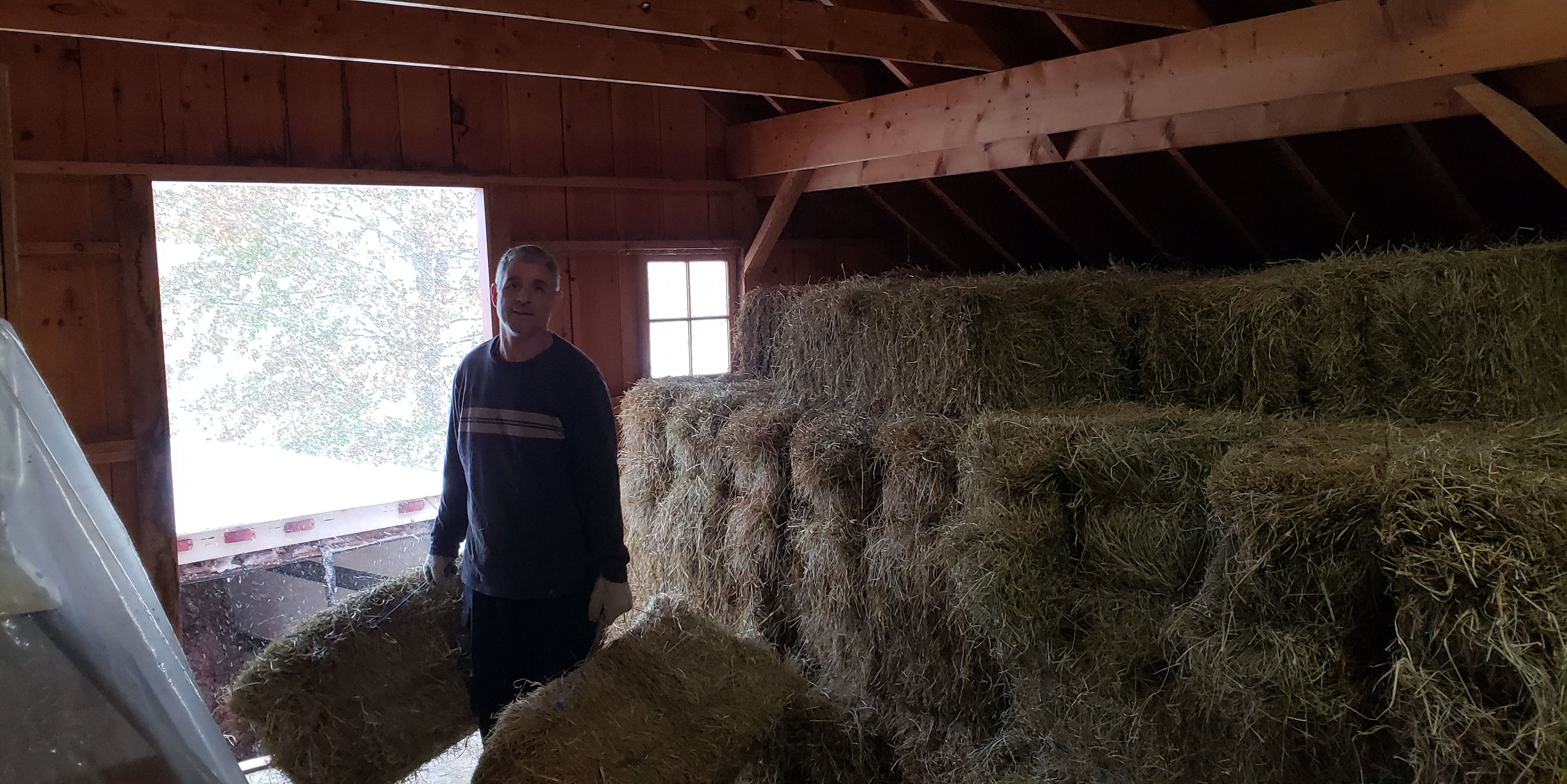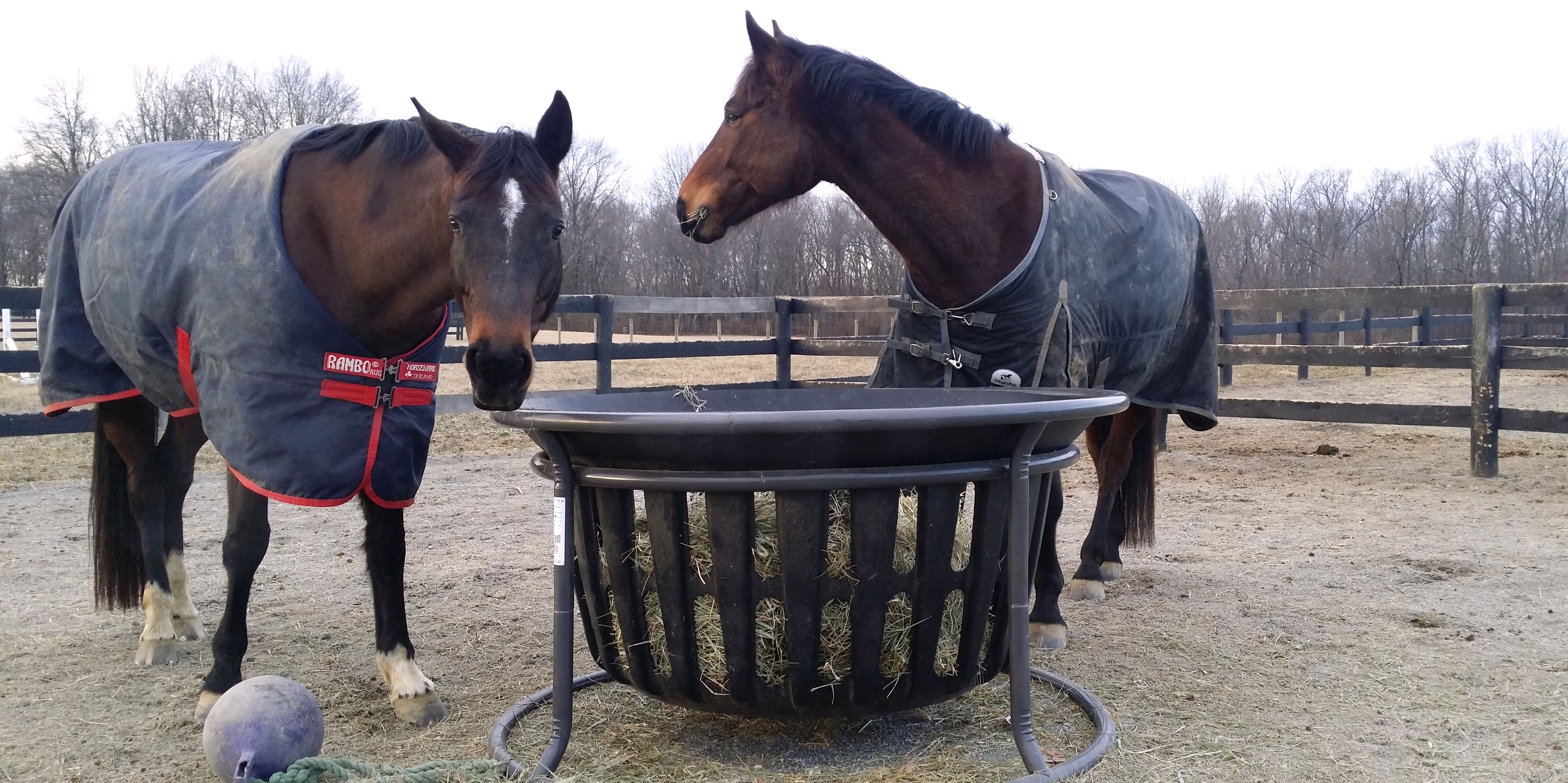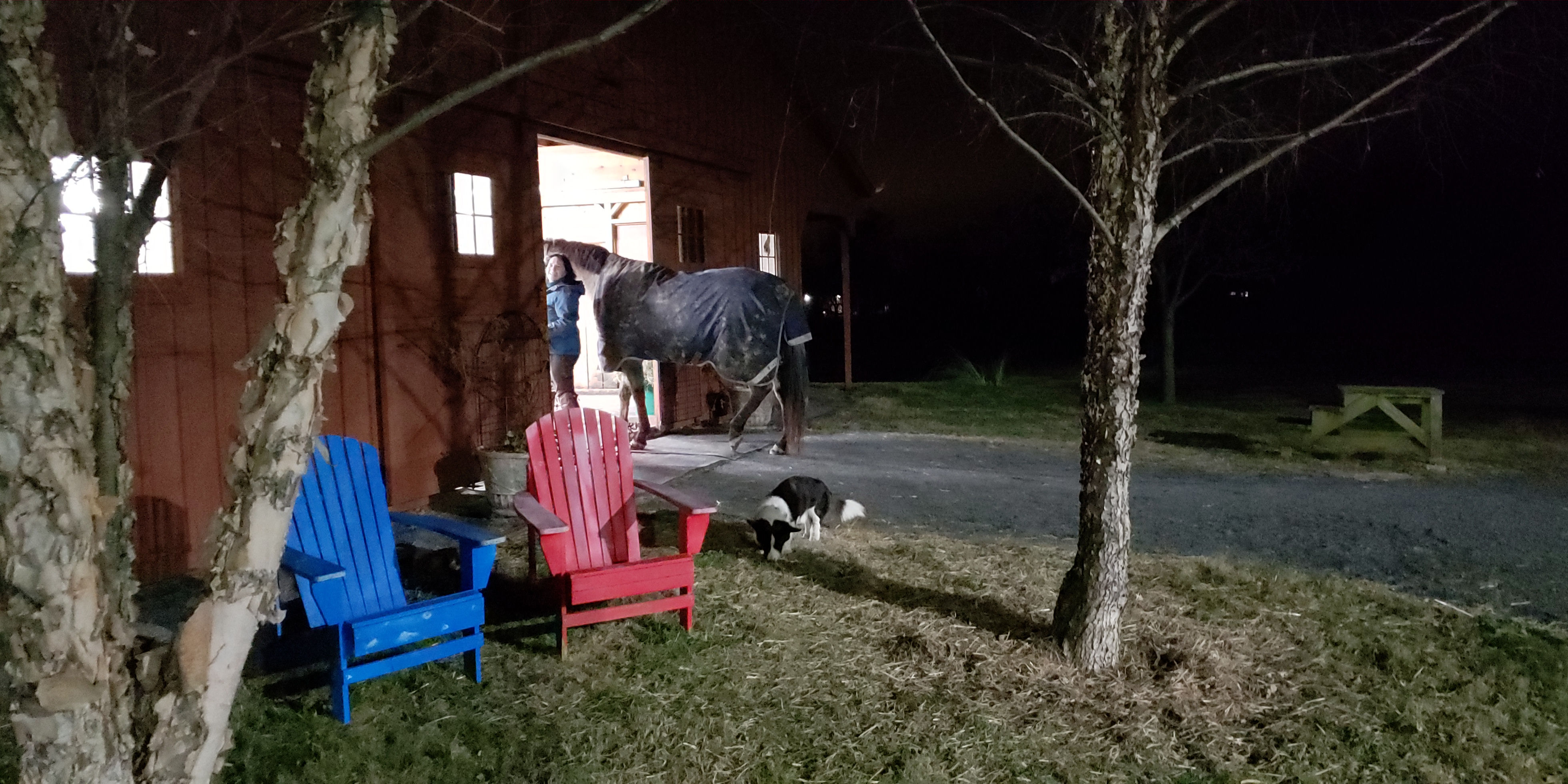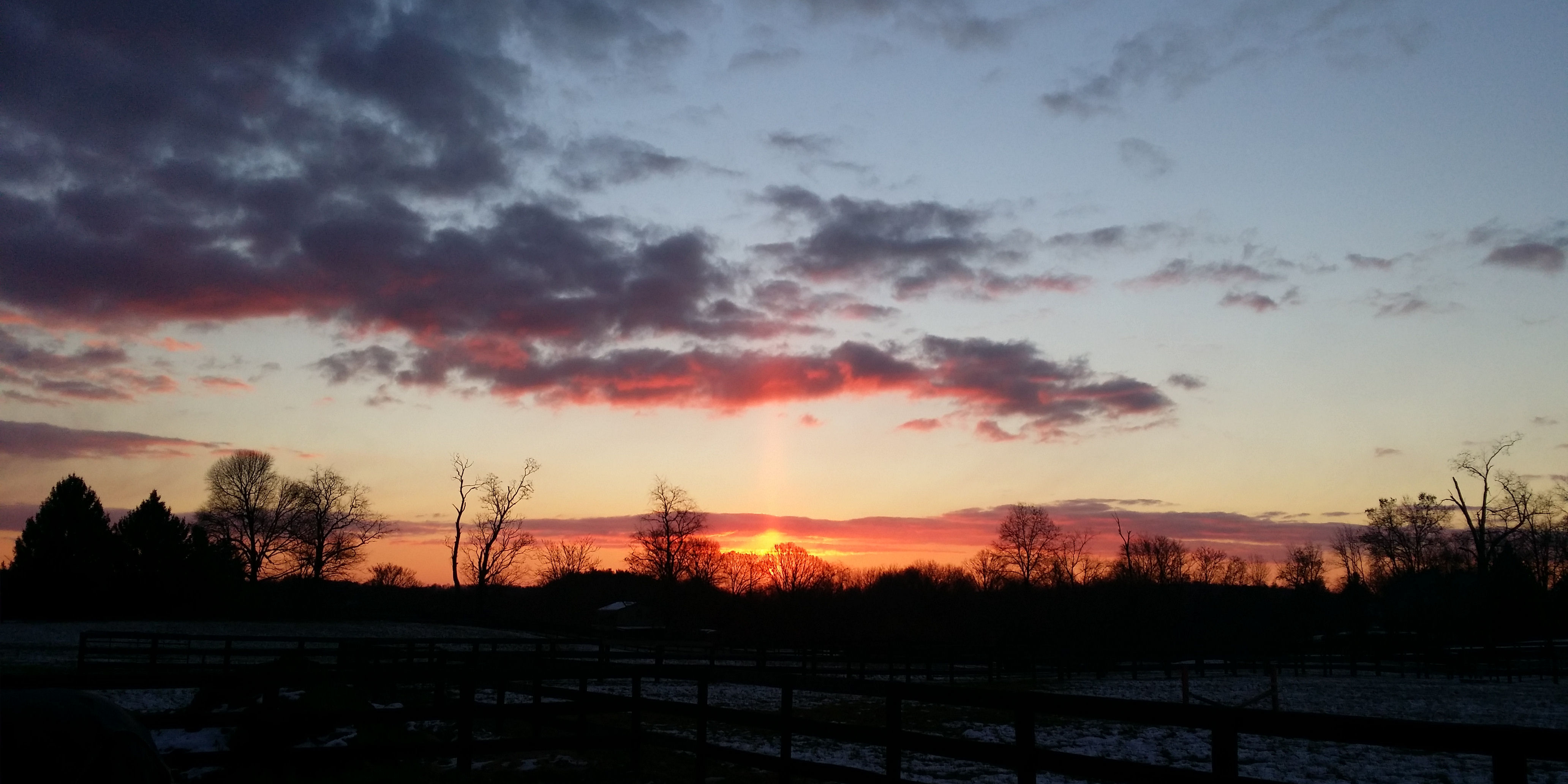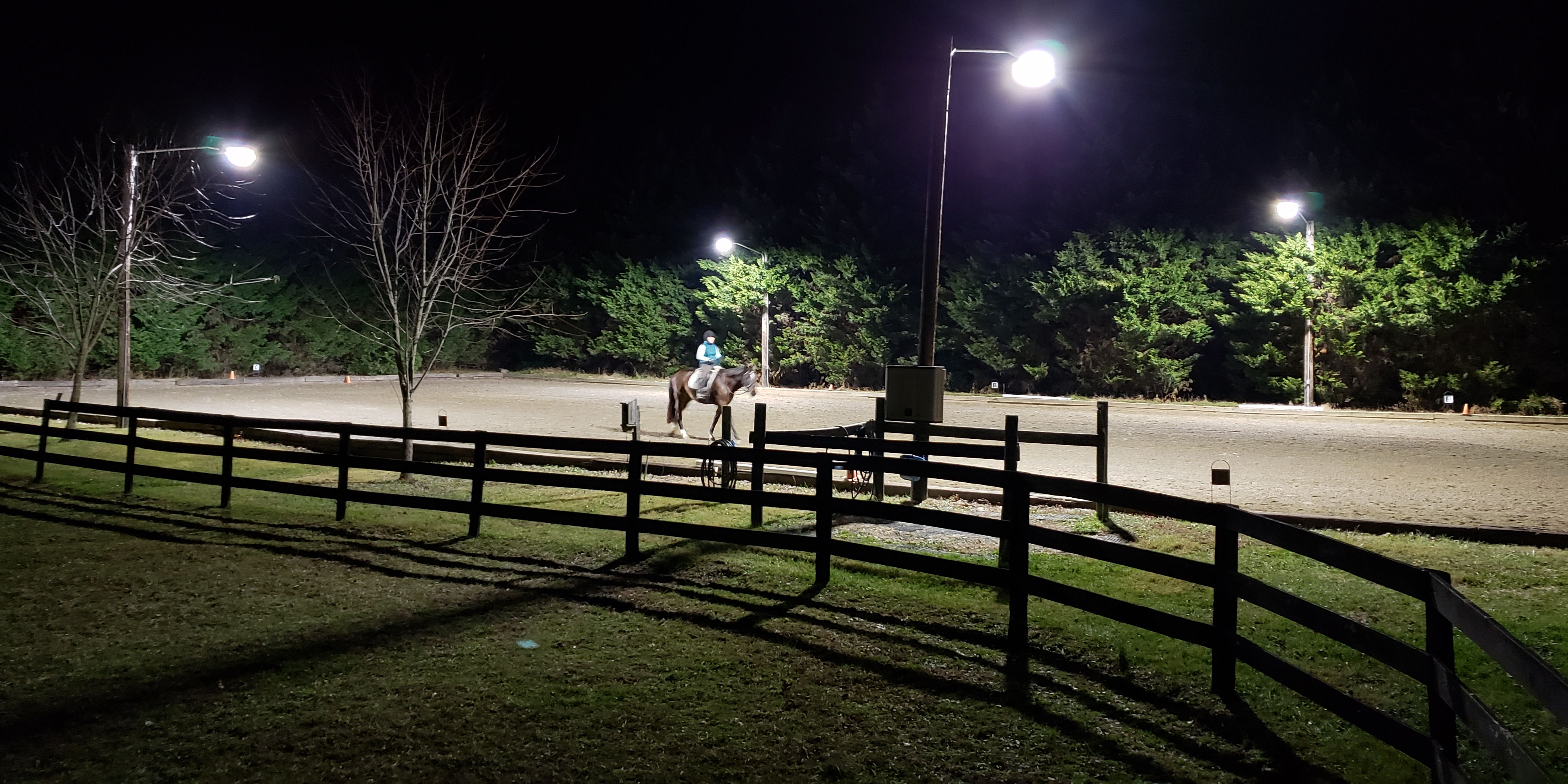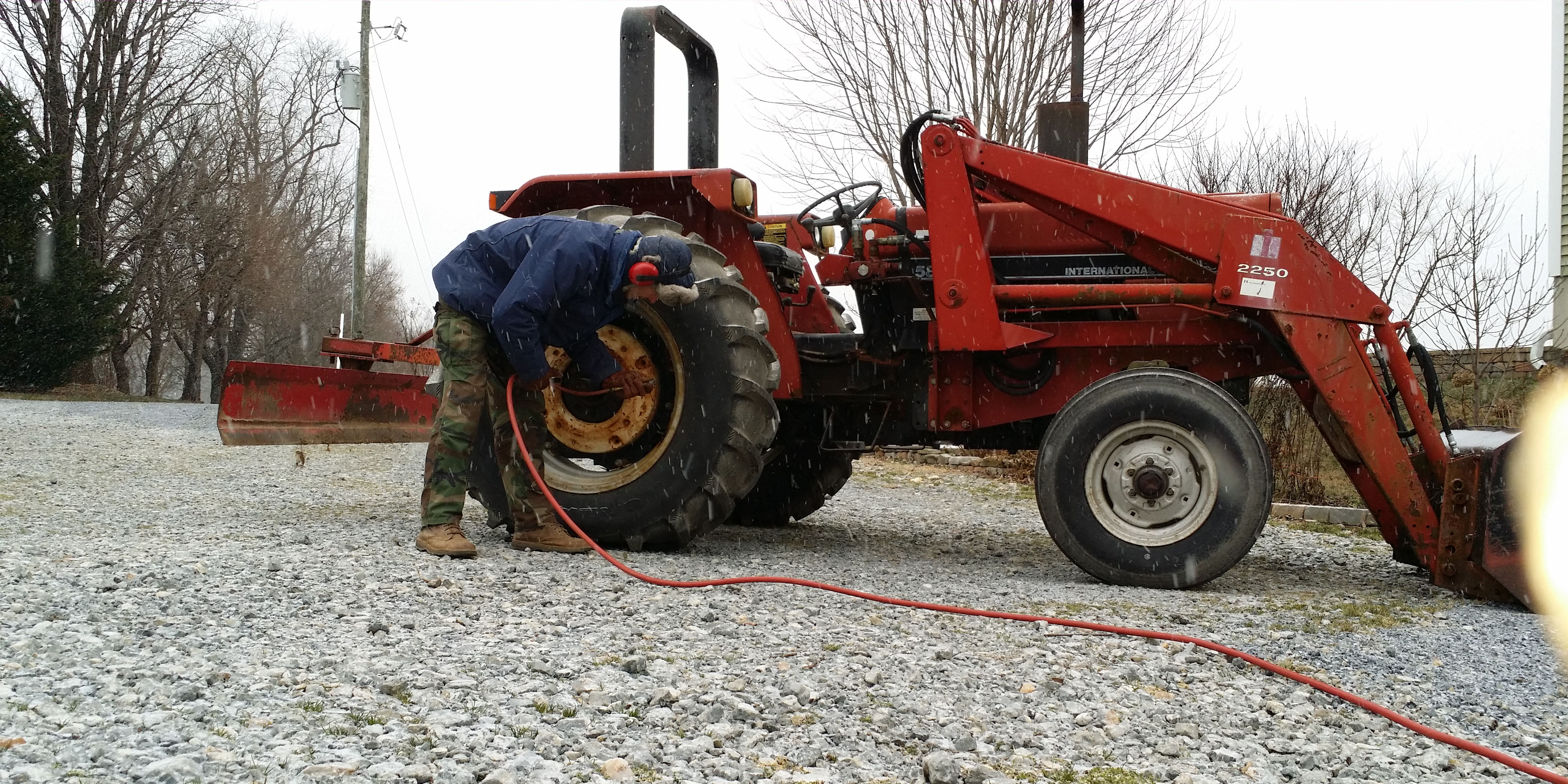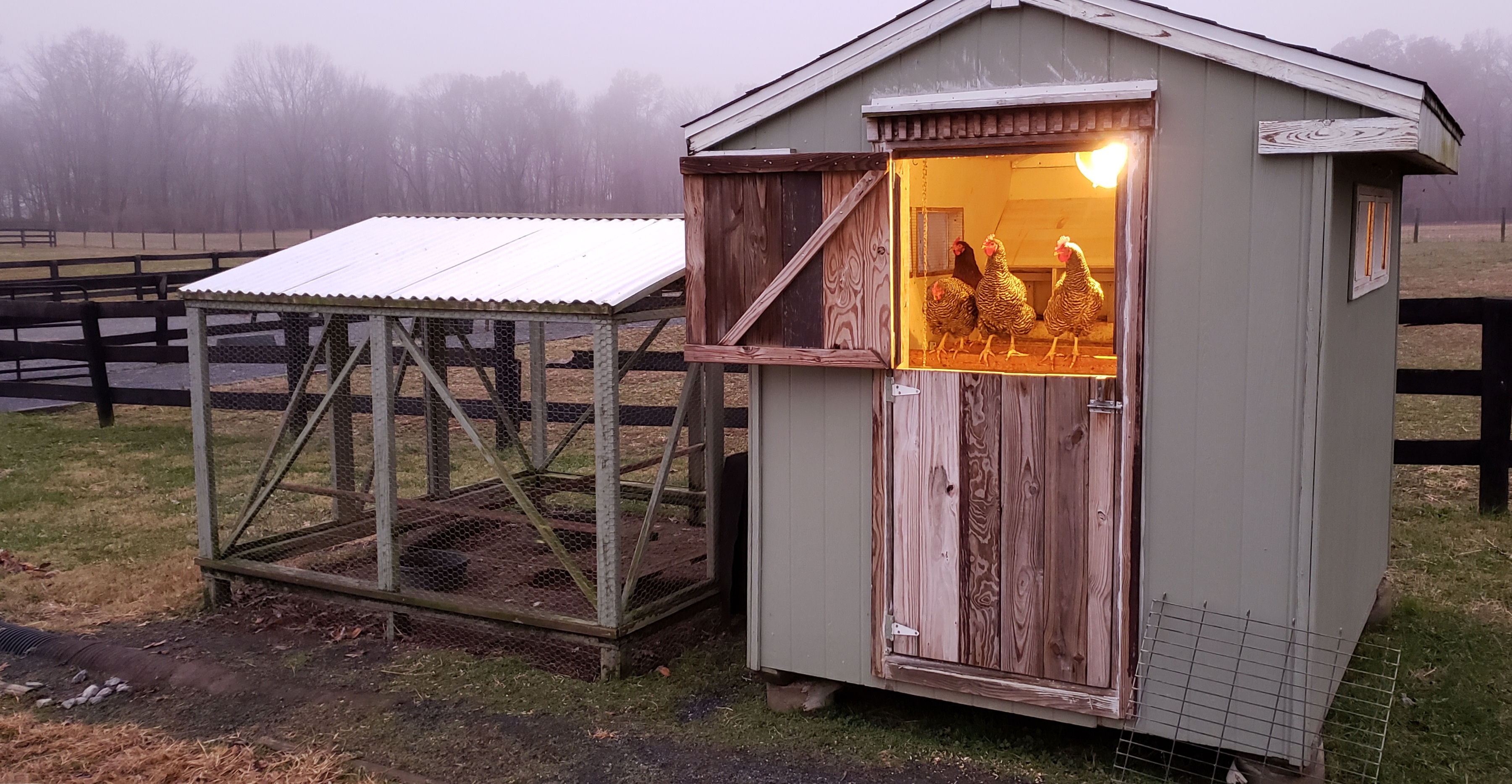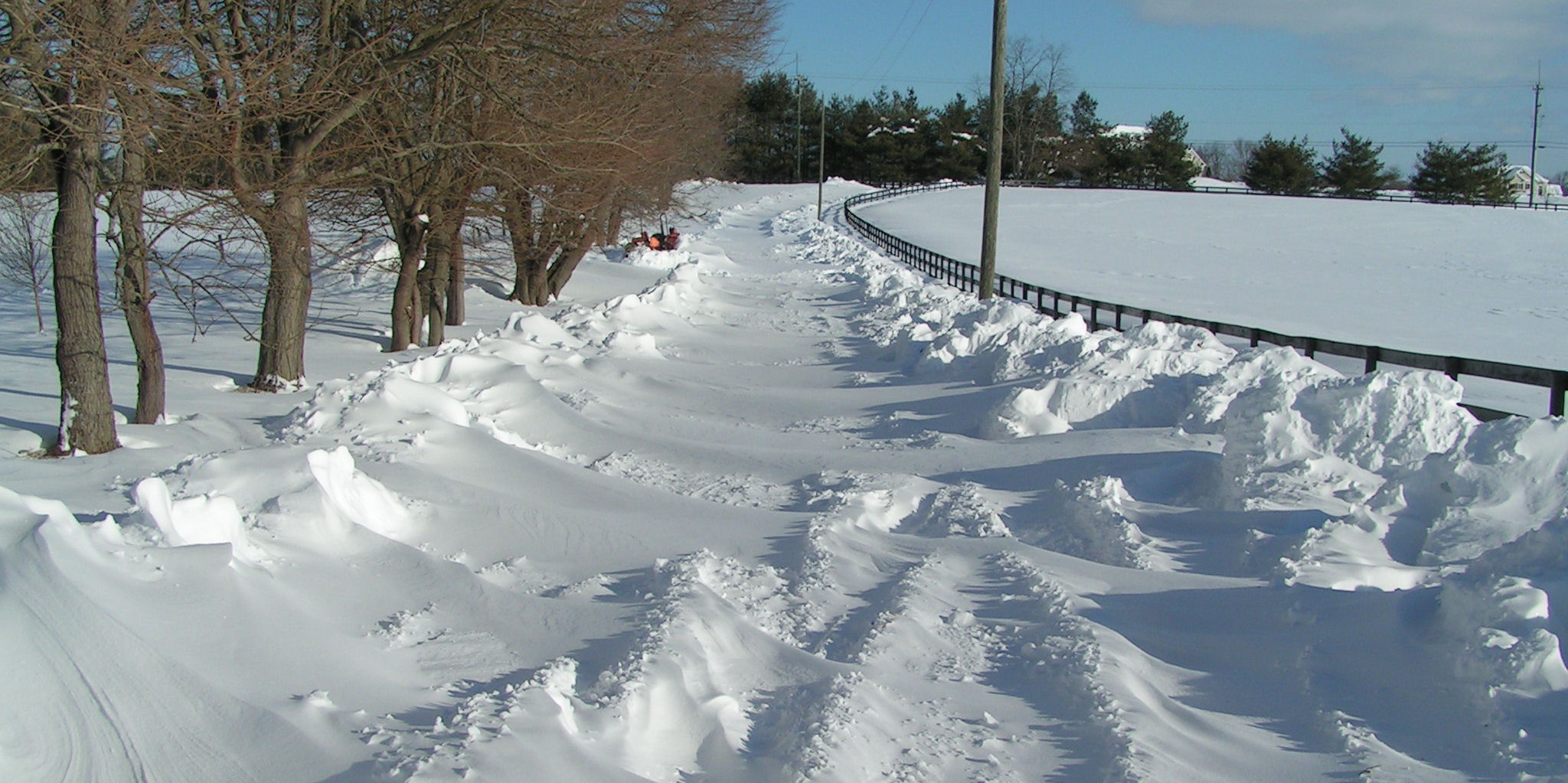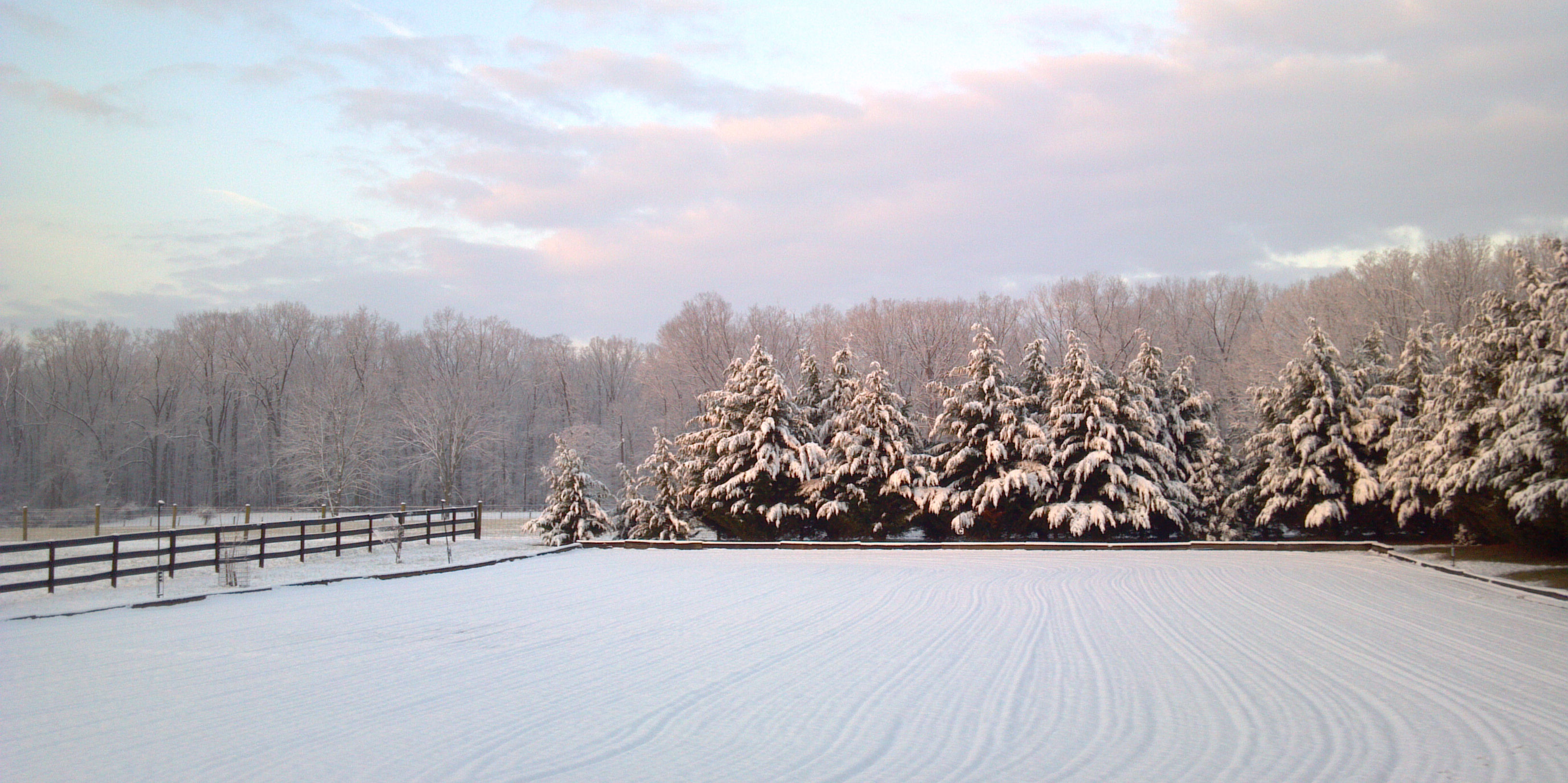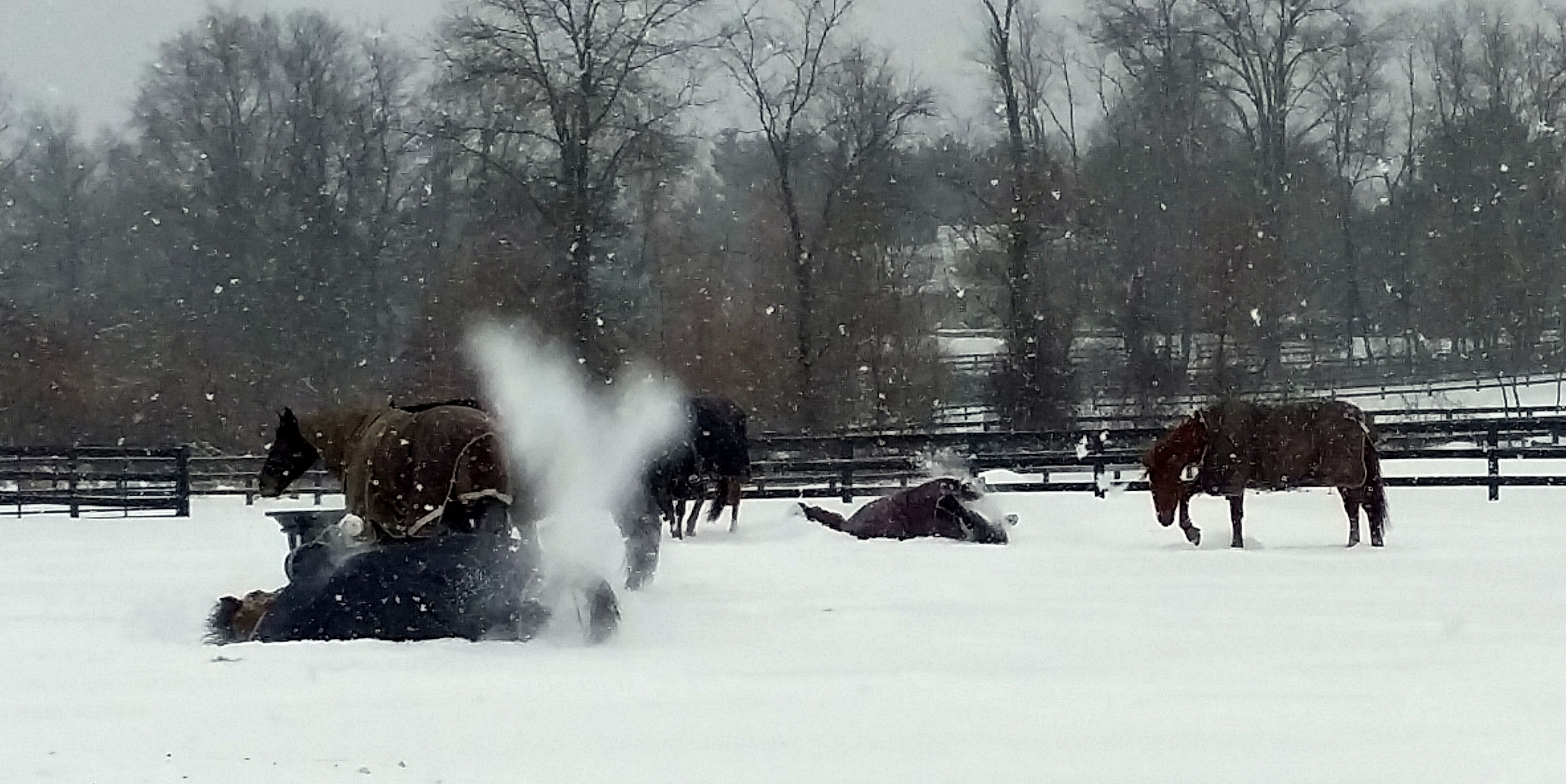Last updated: 2018.12.01
The Winter Way of Doing Things
Should we add liners under their sheets or put the horses in their mediums? Translated, the question is whether the horses should be turned-out in their thin jackets with an extra polyfill liner, or is it cold enough to wear their medium weight jackets? Either option would actually provide about the same level of protection. The forecast did not include rain. The concern today is the wind, gusting at 30-35 mph. The weather and the amount of daylight factor into every activity on a farm.
Since we had to remove the sheets to put on another article, we opted for the medium weight jackets - only one article to put back on, not two. The horses were already wearing sheets, so they were clean underneath and would not require currying, brushing or vacuuming - necessary if they get dirty. Horses like to roll in mud, even in winter.
The seasons significantly affect the way we do things on the farm, especially winter.
Winter conditions make almost every activity more complicated and longer to complete, especially when it's precipitating or in strong wind. Just dressing to go outside takes longer due to the number of extra layers required - relevant to humans and horses.
Working in the barn isn't so bad, shetlered from the wind, snow or rain, and the body heat of several horses warms it up. During the night, horse body heat can keep their water buckets from freezing, but interestingly, not the hose used to fill them. In winter, water hoses must be thoroughly drained after every use. At least daily. Even a small amount of water will create an ice blockage, rendering the hose useless.
When working outside, eyes water, noses run, fingers and toes go numb, and exposed skin burns in the freezing wind. In the rain or snow, and when rinsing/filling buckets, shoes, socks and gloves frequently get wet. The toes and fingers inside begin to freeze, but the work has to be completed.
